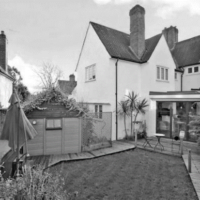 A development viability appraisal is a financial model used for working out how much money a development will generate. In order for a development to be viable, the money left over after the costs have been subtracted from the revenues must be enough to hit two numbers or viability benchmarks:
A development viability appraisal is a financial model used for working out how much money a development will generate. In order for a development to be viable, the money left over after the costs have been subtracted from the revenues must be enough to hit two numbers or viability benchmarks:
- Enough profit for the developer to attract investors to finance the project
- Enough money to persuade the land owner to part with their land
If a site can not achieve these benchmarks it is deemed to be financially unviable and the developer can ask the council to lower planning obligations in order to make a development viable.
| Outgoings | Income | If 1 + 2 + 3 < 4 the development is viable |
| 1. Cost of the land 2. Cost of development 3. The LPA’s cut |
4. The value of the development |
The viability of a development is a material planning consideration within the NPPF, which has placed a much stronger emphasis on viability and calls for balance between sustainable development which benefits the local community and realistic returns for landowners and developers, so that development is commercially viable.
The NPPF is clear that “in all cases, land or site value should reflect policy requirements and planning obligations and, where applicable, any Community Infrastructure Levy charge”
Assessing the land value is often a sticking point in development viability appraisals, with three distinct approaches used.
Most existing models use a residual land value methodology to assess viability. Here, the difference between the value and costs of development are compared with land values to determine whether development will be viable.
Alternatively, the RICS guide to Financial Viability in Planning suggests that market value should be used as the baseline land value. Market value is not what you will get for the land in market but “the estimated amount for which a property should exchange on the date of valuation between a willing buyer and a willing seller in an arm’s-length transaction after proper marketing wherein the parties had each acted knowledgeably, prudently and without compulsion”.
There is also an emerging trend to use Existing Use Value plus (EUV+), which is based on the current use value of a site plus an appropriate site premium, with this approach to assessing land value being recommended in the new London Mayor’s draft supplementary planning guidance.
The principle of this approach is that a landowner should receive at least the value of the land in its ‘pre-permission’ use, which would normally be lost when bringing forward land for development. A premium is added to provide the landowner with an additional incentive to release the site, with regard to specific site circumstances.
If you are would like further information on the viability of your project, assessing land value or would just like to discuss your situation, please contact us on 0808 164 1288 for a no-obligation conversation with one of our experienced team of consultants.





